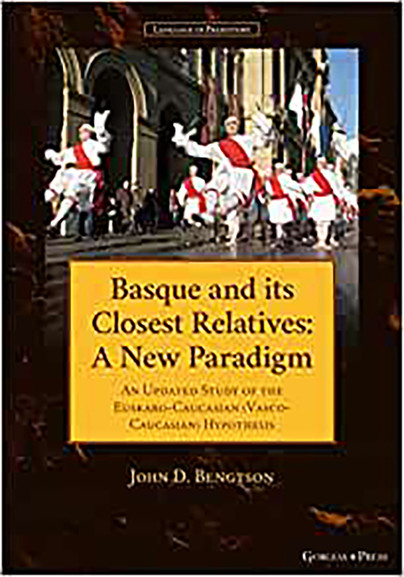Language in Prehistory
Publisher: Gorgias Press
ASLIP was founded in 1986, under the leadership of Harold C. Fleming, to encourage international, interdisciplinary information sharing, discussion, and debate among human geneticists, paleoanthropologists, archaeologists, and historical linguists on questions relating to language origins and ancestral human spoken languages. One objective is to develop a taxonomy of human languages (a linguistic family tree) and reconstructions of major events in the evolution of modern humans. Alongside this, the complex evolution of physical humans—population movements, shared mutations, and archaeological discoveries—may be related to the linguistic family tree. The ultimate goal of ASLIP is to seek the best explanations as they pertain to the emerging synthesis about modern human origins. ASLIP is not committed to any single proposition. The ASLIP book series, Language in Prehistory, is dedicated to the publication of books that further these stated goals.ASLIP was founded in 1986, under the leadership of Harold C. Fleming, to encourage international, interdisciplinary information sharing, discussion, and debate among human geneticists, paleoanthropologists, archaeologists, and historical linguists on questions relating to language origins and ancestral human spoken languages. One objective is to develop a taxonomy of human languages (a linguistic family tree) and reconstructions of major events in the evolution of modern humans. Alongside this, the complex evolution of physical humans—population movements, shared mutations, and archaeological discoveries—may be related to the linguistic family tree. The ultimate goal of ASLIP is to seek the best explanations as they pertain to the emerging synthesis about modern human origins. ASLIP is not committed to any single proposition. The ASLIP book series, Language in Prehistory, is dedicated to the publication of books that further these stated goals.ASLIP was founded in 1986, under the leadership of Harold C. Fleming, to encourage international, interdisciplinary information sharing, discussion, and debate among human geneticists, paleoanthropologists, archaeologists, and historical linguists on questions relating to language origins and ancestral human spoken languages. One objective is to develop a taxonomy of human languages (a linguistic family tree) and reconstructions of major events in the evolution of modern humans. Alongside this, the complex evolution of physical humans—population movements, shared mutations, and archaeological discoveries—may be related to the linguistic family tree. The ultimate goal of ASLIP is to seek the best explanations as they pertain to the emerging synthesis about modern human origins. ASLIP is not committed to any single proposition. The ASLIP book series, Language in Prehistory, is dedicated to the publication of books that further these stated goals.

Format: Hardback
Pages: 546
ISBN: 9781463244118
Pub Date: 28 Apr 2022
Description:
John D. Bengston offers a detailed analysis of the Euskaro-Caucasian hypothesis in this new volume, exploring the idea that the Basque language is most closely related to the North Caucasian language family. He builds on ideas proposed by prominent scholars in the 20th century, notably the work of C.
C. Uhlenbeck, Georges Dumézil, and René Lafon. Whilst important, their ideas were rather sporadic and consisted of scattered articles, and they never developed a comprehensive phonological and morphological model of Euskaro-Caucasian.Now thanks to advances in our understanding of Basque phonology and etymology, and in North Caucasian phonology and etymology, and improved linguistic methods, it has become possible to develop a comprehensive Euskaro-Caucasian phonological structure, including regular sound correspondences of vowels and consonants supported by significant numbers of etymologies. These correspondences, in turn, have allowed the author to evaluate objectively the etymological proposals of earlier investigators (which led to the modification or outright rejection of many of them), and have also provided clues to discovering some original etymologies. The nucleus of the Euskaro-Caucasian hypothesis is 'old', beginning in the 19th century, but the 'new paradigm' alluded to in this volume's subtitle refers to a focus on the North Caucasian language family as the closest surviving relative of Basque (as opposed to the 'South Caucasian' = Kartvelian family); a new and comprehensive scheme of comparative phonology; new discoveries in comparative morphology; and finally several hundred lexical and grammatical etymologies that supersede the more haphazard comparisons offered in earlier research.

